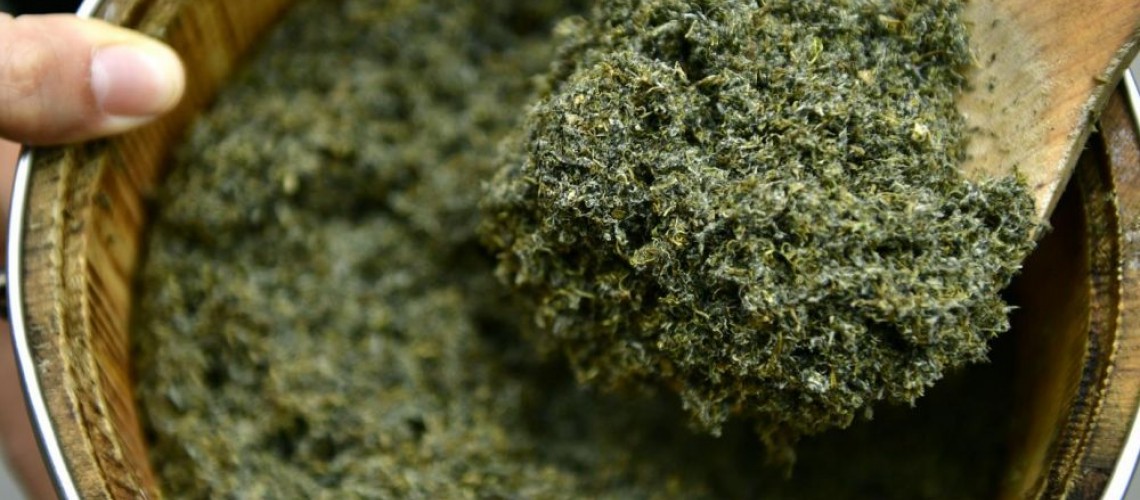Artemisia annua peut-elle inhiber la croissance des tumeurs malignes ?

Dihydroartémisinine, dérivé de l'artémia Annua : un médicament potentiel pour le traitement des tumeurs malignes et des maladies inflammatoires. La dihydroartémisinine (DHA) est mondialement reconnue pour son efficacité et son innocuité dans le traitement clinique du paludisme depuis des décennies. Récemment, il a été découvert que le DHA inhibe la croissance des tumeurs malignes et régule la fonction du système immunitaire en plus de l'anti-paludisme. Dans les parasites et les tumeurs, le DHA provoque un stress oxydatif sévère en induisant une production excessive d'espèces réactives de l'oxygène. Le DHA tue également les cellules tumorales en induisant la mort cellulaire programmée, en bloquant le cycle cellulaire et en renforçant l'immunité anti-tumorale. De plus, le DHA inhibe l'inflammation en réduisant l'infiltration des cellules inflammatoires et en supprimant la production de cytokines pro-inflammatoires. En outre, la génomique, la protéomique, la métabolomique et la pharmacologie en réseau de la thérapie au DHA fournissent la base pour élucider les effets pharmacologiques du DHA. Cette revue fournit un résumé des récents progrès de la recherche sur le DHA dans l'anti-tumeur, l'inhibition des maladies inflammatoires et les mécanismes pharmacologiques pertinents. Avec des recherches plus poussées sur le DHA, il est probable que le DHA deviendra une thérapie alternative dans le traitement clinique des tumeurs malignes et des maladies inflammatoires.
Introduction
La dihydroartémisinine (DHA), est le métabolite actif des composés de type artémisinine in vivo (1, 2). Le DHA est largement utilisé dans le traitement clinique du paludisme et a sauvé d'innombrables vies, en raison de son efficacité à 100 % contre les parasites du paludisme et de sa faible toxicité. Le DHA tue les parasites plasmodium en endommageant leurs membranes, en perturbant leur fonction mitochondriale et en provoquant un stress oxydatif en produisant un excès d'espèces d'oxyde réactif (ROS) (3, 4). En plus de tuer directement les parasites du paludisme, il a été récemment découvert que le DHA améliore la capacité du système immunitaire à résister aux parasites, tels que les parasites du paludisme et Toxoplasma gondii. Jagannathan et al. constatent que les enfants ougandais qui reçoivent une administration préventive de DHA de 6 à 24 mois ont une incidence plus faible de paludisme, plus de cellules T IL-2+CD4+ et de cellules T TNF-α+CD4+, et moins de cellules T IL-10+CD4+ que leurs pairs qui ne reçoivent pas de DHA (5). Zhang et ses collègues constatent que le DHA augmente le nombre de cellules T auxiliaires (Th) et de cellules T CD8+ et les niveaux d'IL-5 et d'IL-22, diminue le nombre de cellules B et le contenu de certaines cytokines inflammatoires, dont le TNF- α, IFN-γ, IL-2, IL-4, IL-6 et IL-10 chez les souris infectées par Toxoplasma gondii ou Plasmodium Berghei (6). Les études ci-dessus montrent que le DHA peut non seulement tuer directement les parasites, mais également empêcher les hôtes de contracter des maladies parasitaires en régulant la production de sous-ensembles de cellules T et de cytokines.
Avec le développement de la recherche sur le DHA, il a été découvert que le DHA a un effet pharmacologique d'inflammation anti-tumorale et inhibitrice (7-12). Notre laboratoire a étudié les effets anti-tumoraux et inhibiteurs de l'inflammation du DHA et conduit une analyse préliminaire de ses mécanismes. Il a été découvert que le DHA inhibe la croissance et les métastases du mélanome chez la souris de plusieurs manières (13). En outre, le DHA atténue également de manière significative les lésions psoriasiques des souris induites par l'imiquimod (14). Les effets pharmacologiques du DHA sur les tumeurs, les infections pathogènes, etc. au cours des dernières décennies ont été décrits dans la revue de Ho et al. (15), Efferth (16) et Slezakova et al. (17). Par conséquent, cet article passera en revue les dernières avancées des études DHA anti-tumorales (tableau 1) et anti-inflammatoires (tableau 2) ces dernières années.
Sources: https://www.frontiersin.org/articles/10.3389/fonc.2021.722331/full















































